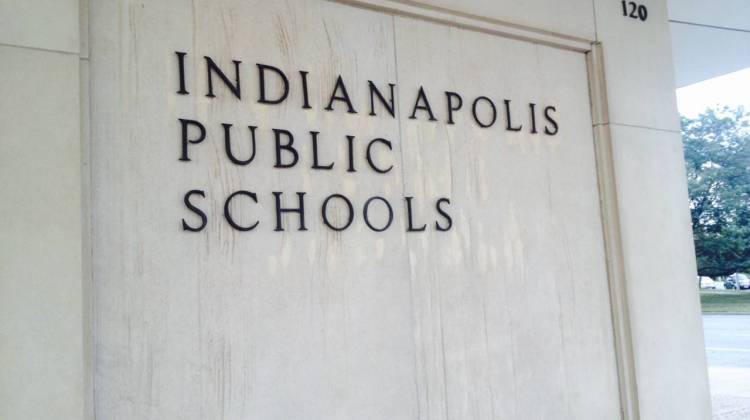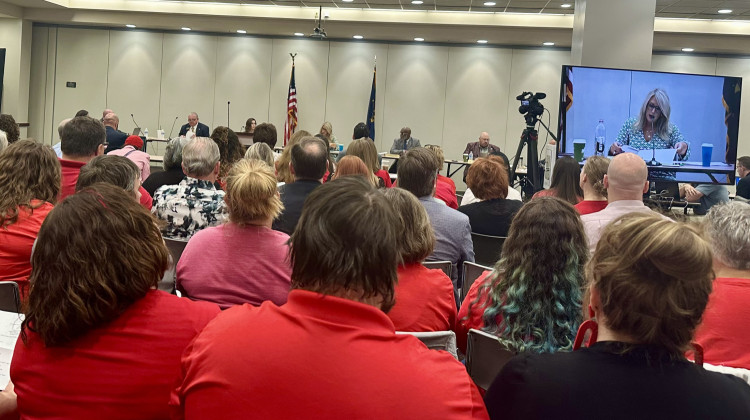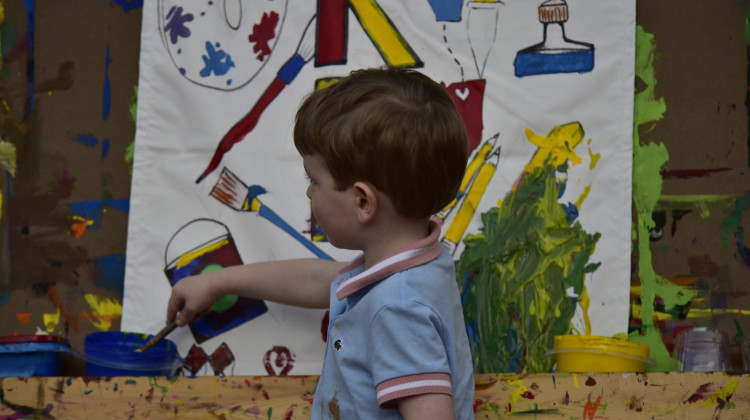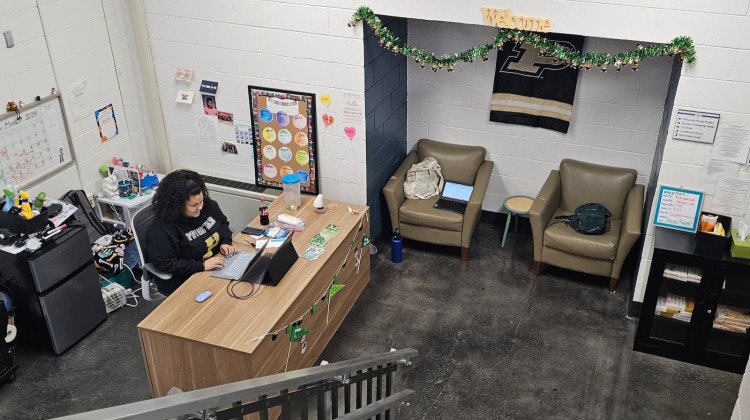
Indianapolis Public Schools will require all students and staff to wear face masks, make space for physical distancing in buildings, reduce the number of students riding buses, and install touchless water fountains, according to a reopening plan released Friday.
Alan Petersime/ChalkbeatIndianapolis Public Schools will require all students and staff to wear face masks, make space for physical distancing in buildings, reduce the number of students riding buses, and install touchless water fountains, according to a reopening plan released Friday.
The reopening plan for the state’s largest district will cost at least $15 million and reshape the daily operations in schools across the school system. But just what schools look like this fall — and what adaptation will be necessary — hinges on a factor that’s still uncertain: How many parents will choose to send their children back to school buildings while the pandemic rages on.
Families can choose between full-time virtual learning and full-time in-person attendance. Parents have until July 17 to decide whether to enroll their children in the remote option, and students in the virtual option will not be able to switch to in-person instruction until next semester.
With the rapidly shifting nature of the pandemic, however, the plan could change over the coming weeks and months, said IPS Superintendent Aleesia Johnson.
“We want to be sure we are responding to what’s happening in our community from a health perspective,” Johnson said. “Literally everyone is navigating unchartered waters.”
Districts across Marion County are expected to take a similar approach, offering in-person or virtual instruction, according to a statement released last month. That’s a contrast with districts in some other states, such as New York City, where students are expected to have staggered schedules and come to school in person part time as a way of increasing distancing and reducing contact with others.
Whether to reopen schools full time has become a political lightning rod in recent days, as U.S. Education Secretary Betsy DeVos and President Trump have called for schools to fully reopen and threatened to withhold federal funding from schools that don’t.
But by the time the national political debate reached a peak, Indianapolis districts were well into planning for the school year. Most schools in Marion County begin in late July or early August — several weeks before schools typically return in Northeastern states.
Once the school year begins, if an IPS student or staffer tests positive for coronavirus the district will decide how to respond based on the individual situation, Johnson said. Officials aim to have enough information to do contract tracing so that they can limit the number of people who must quarantine. In some cases, for example, the student’s class might need to quarantine while the rest of the school remains open, she said.
The cost of responding to the pandemic continues to rise. IPS has spent $15 million so far, with the largest chunk, about $12 million, going to purchasing devices for students. The district is also buying masks, hand sanitizer, and at least 80 touchless, filtered water fountains.
Here are some of the biggest changes to IPS schools this year:
Masks
IPS is requiring nearly all staff and students in grades K-12 to wear masks at school and on buses. The district will provide one reusable mask to each child and staff member, and it’s purchasing 200,000 disposable masks for backup if someone arrives to school without a mask.
Students will get mask breaks throughout the day and be allowed to remove their masks to eat and drink.
There will be exceptions for students with health conditions that prevent them from wearing masks and students who are too young or unable to remove their own masks.
The district is also purchasing 3,200 face shields for teachers in earlier grades who need to teach lessons where their mouths are visible, such as when showing students how to make letter sounds.
Wearing masks is recommended by public health experts, but whether to require them is also a point of political controversy. Some Indiana districts are not requiring students or staff to wear masks.
Social distancing
IPS will require students and staff to remain 3- to 6-feet apart, an expectation that will lead to changes throughout the school day. Some hallways will be designated as one way, and bell schedules will be staggered.
Students will pick up lunch in the cafeteria at staggered service times. Many students will take lunch back to their classrooms to eat. Gym classes will only include activities without physical contact, such as running. Music classes will be smaller to allow for social distancing.
IPS has many schools where enrollment is below capacity, which should make social distancing easier. But some campuses are crowded. Johnson said the district asked any principals who felt their buildings do not have the capacity for social distancing to reach out for help adapting spaces, such as cafeterias. IPS does not anticipate that any schools will need to use a hybrid model, where students stay home from school some days.
“That being said, we know that all options have to be on the table and that we need to be ready to respond if the context changes,” Johnson said.
Transportation
IPS is hiring about 18 crossing guards to help more students walk to school safely — and reduce the number of children on buses. Previously, some students who lived close enough to walk to school took the bus because they would need to cross busy intersections. The district is also asking parents who can to drive their children to school.
The district goal is for buses to have social distancing with only one child sitting in each row. But officials acknowledge that may not be possible. Students will be required to wear masks on buses, and buses will be cleaned before and after each route.
IPS will continue a partnership that allows high school students to ride public IndyGo buses to and from school for free.
Health screening
IPS will have staff trained at every school to screen students and staff who may be experiencing COVID-19 symptoms. Each IPS building will have an isolation room.
The district is also asking families to monitor their children for symptoms of COVID-19. If children have fevers or other symptoms, they should not go to school.
Virtual instruction
The district will provide students in the remote program with devices and wireless hotspots if needed. A district survey of parents found that about one-third of IPS students would enroll in virtual instruction if it was offered. But whether families will follow through once they know more about reopening is uncertain.
District-level teachers will provide daily video recordings for the virtual program while teachers at the home school will continue to provide other support, such as small group instruction. But how instruction is divided will depend on each student’s school and grade level. The district is hiring about 12 to 14 teachers to teach K-8 virtually. High school students will receive instruction through an online platform, and they will be supported by staff at their home schools.
Chalkbeat is a nonprofit news site covering educational change in public schools.
 DONATE
DONATE








 View More Programs
View More Programs

 Support WFYI. We can't do it without you.
Support WFYI. We can't do it without you.